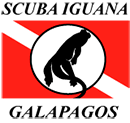THE GALAPAGOS ISLANDS
Almost 1000km from Ecuador and surrounded by one of the largest marine reserves in the world, the Galapagos Islands can take you into a journey where incredible and unique bio-diversity can be found both above and below the sea. Their relative isolation and ongoing seismic and volcanic activity caused unusual and totally unique species to evolve. These include the marine iguanas, giant tortoises (whom the islands are named after), most northerly species of penguin in the world, flightless cormorants, giant cacti and multiple subspecies of mockingbirds and finches. Fortunately for us as divers and visitors, Galapagos ecosystems remain remarkably unchanged with an amazing 95% of pre-human bio-diversity still intact. It is still the second most pristine place in the world after Antarctica. In other words, you can still see today what inspired Charles Darwin’s theory of evolution when he visited in 1835.
- Subtropical
- Weather
- Warm season (December – May): Low 80°F – Low 90°F, possibilities of rain. Good time to visit for sunshine, warmer, calmer seas.
- Cool season (June – September): Low 60°F – High 70°F, mornings are often misty. Good time to visit for increased underwater animal activity.
- Dry season (October – December): 70°F – 80°F. Good time to visit for mild weather, combining land and underwater activities.
- January – June: 70°F – 80°F (20°C-26°C)
- July – December: 65°F – 75°F (18°C- 23°C)
When diving we have 5 or 7mm wetsuits for you so that nobody is shivering rather than enjoying themselves! In cooler seasons we also have accessories such as hoods for you to use if you would like to. If you are not used to cold seas or if you feel the cold more than others please feel free to bring an extra base layer (although we do keep a few spares on hand).
If you plan to snorkel we would recommend using a 3mm wetsuit at cooler times of the year. You can rent these locally.
- January – June: Southeast trade winds become weaker and water coming from the Panama Basin bring warmer, calmer seas. Sailing to any island is easier.
- July – December: The Humboldt Current typically brings choppy seas and strong surges making sailing times longer – sea sickness medication is recommended. The movement and cooler water also brings nutrients and larger animals to the islands.
Every 3 – 7 years: The El Niño typically brings warmer sea surface temperatures, a depletion of nutrients in the water, more rainfall, higher sea level and more wave action.
On average visibility in the Galapagos is approximately 8 – 10m (25ft to 35ft) with it increasing to 18m (60ft) on good (calm and sunny) days. If you’re used to 20/30/50m visibility don’t worry! A unique aspect of the Galapagos is that the wild life is abundant and at times even curious or playful. You will be diving close enough with sea lions, sharks and other animals – often the difficulty is choosing where to look!
Galapagos National Park rules are very strict. Unfortunately human interaction and introduced species are two of the biggest threats to the islands so please help us to keep their impact minimal.
As one of the rules of the National Park, a naturalist must accompany you. He or she will advise you of what is and is not permitted while visiting the islands. Please follow their instructions. The most important rules are the following:
- Always follow the marked trail or your guide
- Do not touch the animals
- Do not take souvenirs (rocks/shells, etc) from the islands or seas
- Do not get too close (2 meters) to animals (especially babies and juveniles)
- Do not litter
- Do not smoke in the National Park
- Do not take food to the islands (especially organic)
- Clean your shoes’ soles before disembarking in the islands. You may have carried some seeds endemic to one island and would not want to introduce them to another.
- Always stay together with your group.
While perhaps seeming excessive please keep in mind that these rules are the only way this unique archipelago will last for years to come.


